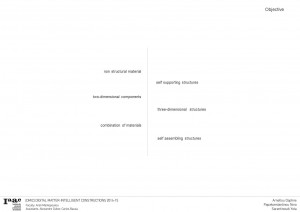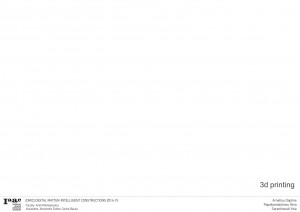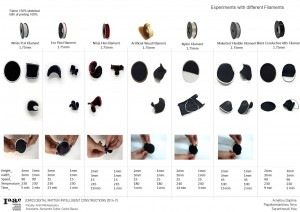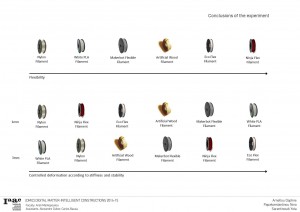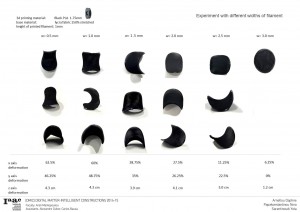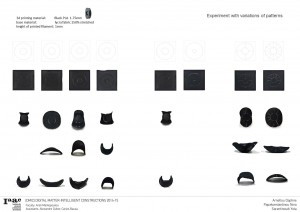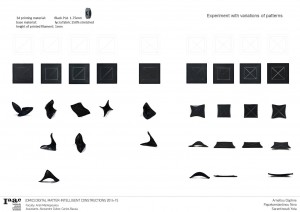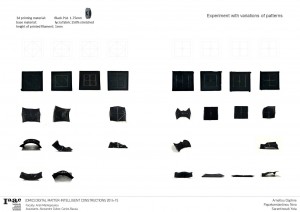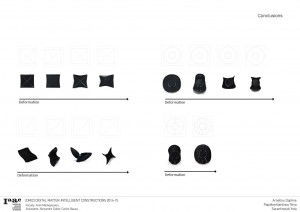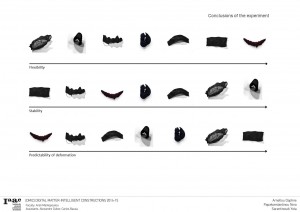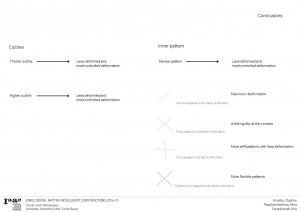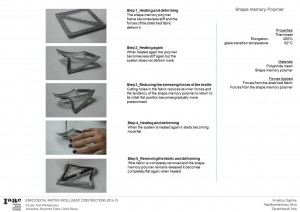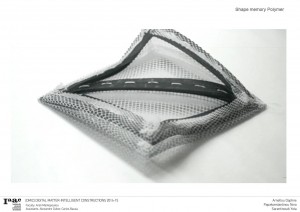Group: Arnellou Zoi-Dafni, Papakonstantinou Eirini-Aikaterini, Sarantinoudi Panagiota
Objective: Design a structural and self-assembling structure from a two-dimensional, flexible material like fabric
Topic: Responsive structural behavior based on the properties of pre-stretching of fabric
Description: Our research was initially inspired by the Programmable Textiles project of the Self-Assembly lab of MIT. The objective of this project was to program pieces of textile to deform in a specific way after patterns had been 3d-printed on them at a pre-stretched state. The objectives of our research are to understand the mechanisms through which these deformations occur, to add interactive elements and to explore how a structure of these principles could be applied in architecture.
At the first stage, our research was focused on the deformations that occur when simple patterns are being 3d-printed with certain filament on stretched lycra fabric. The conclusions extracted from this stage are important for the form-finding of our final structures in a bigger scale.
The next step of our research was to define a way to enlarge our structures. The PLA filament we mainly used for the 3d-printing is a typical thermoplastic material, meaning that becomes pliable or moldable above a specific temperature and solidifies upon cooling. This way, when the prototypes are heated the printed pattern becomes less stiff and at the same time the forces of the stretching of the fabric prevail and the deformation becomes more intense. Except if an external force is applied, the pattern becomes stiff again when cooled in a new position.
Following this principle, among the heat-responsive polymers we think that the shape memory polymer could have a lot of potential for the further development of our project. Changing the stiffness of the material by heating, in the desired places would offer us control over the form of the structure in a much larger scale.


